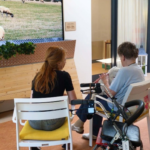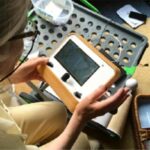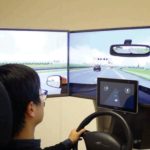PhD thesis by Siti Aisyah Binti Anas
Nowadays, objects are embedded with various sensors, making the objects knowledgeable and smart, gradually reducing users’ need to intervene. As a result, these intelligent objects that work quietly in the background are perceived as passive and reactive objects when interacting with users. The lack of communication between the objects and the users impedes the objects from being smarter and understanding the users’ requirements. Recently, many researchers actively and continuously research to improve the users’ interaction and engagement with the objects. The research objectives are to increase and improve the users’ awareness when interacting and engaging with the objects. Hence, it is essential to design useful feedback or feed-forward methods to indicate the objects’ internal operation state and facilitating communication with engaging users. Another different method, direct manipulation of the objects that exploits the human skills, also enhanced the interaction and engagement between the objects and the users. Looking at that, yet most human-object communication adopts one-directional communication, where the human always acts as the initiator when interacting and engaging with the objects. Thus, it is questionable and remains arguable to understand the objects’ smartness that could initiate and continuously communicate with the users.









